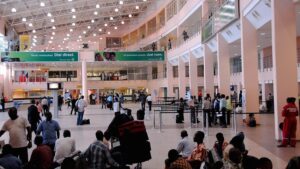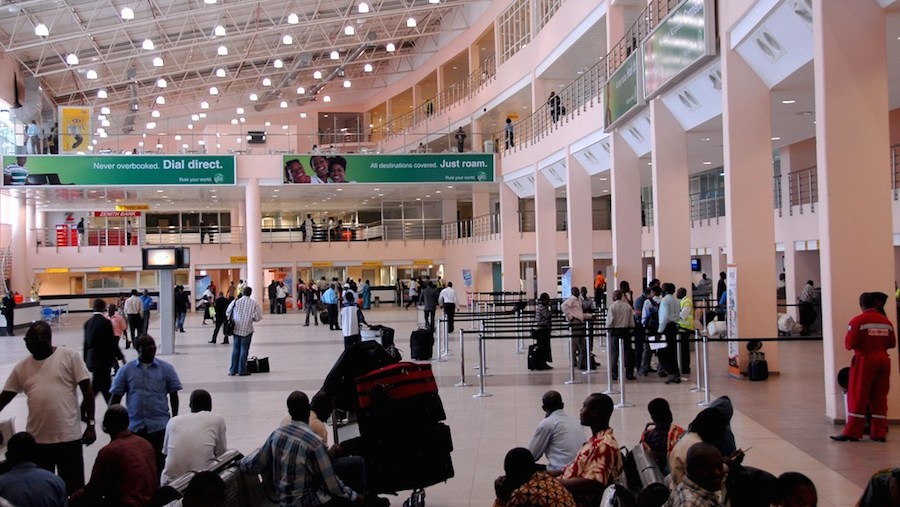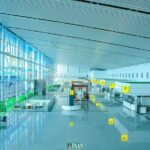
Late January to March every year is the period Nigerian airlines dread because it is characterised by low passenger traffic and low airfares.
THISDAY investigation revealed a slash in the cost of tickets from the average N65, 000 in December to N23, 000 from mid January, as Calabar-Lagos fares have come down to about N23, 000 to N25, 000; Enugu-Lagos still relatively high at N35, 000; Abuja-Lagos fares go as low as N28, 000 and the same with Lagos-Port Harcourt.
But Lagos-Warri and Lagos-Umueri, Anambra state fares are still high at N40, 000 to N50, 000.
During December the busiest routes were southern destinations, especially the old eastern routes like Calabar, Uyo, Anambra (Umueri), Enugu, Owerri, Port Harcourt, Warri and Benin, where fares went as high as N120, 000 per ticket, but now the old triangular destination of Lagos-Abuja-Port Harcourt have sprung up, especially, Lagos. Abuja routes, while there is low traffic to the eastern routes that boomed in December.
Also while the nation’s busiest airports in Lagos and Abuja recorded the highest passenger traffic compared to the previous years, Eastern routes also recorded unprecedented passenger traffic in December.
Available records from the Federal Airports Authority of Nigeria (FAAN) indicated that in December 2021, the Murtala Muhammed International Airport (MMIA), Lagos recorded 351, 000 arrivals and 347, 000 departures in domestic operations; the Nnamdi Azikiwe International Airport recorded 306, 000 arrivals and 330, 000 departures.
These figures are still higher than pre-COVID-19 era, as records in 2019 indicated that Lagos had 229, 912 arrival passenger traffic in December and 228, 421 departures.
In the same vein, Abuja recorded 218, 509 arrivals and 241, 061 departures.
Head of Communications, Arik Air, Mr. Adebanji Ola, told THISDAY that airlines do not just bring fares down but subject to demand and supply, noting that this is low season and during this period fares are low because passenger traffic is also low.
“Market forces determine the fares. Normally this period is low season so it is expected that fares should be low,” he said.
Also the Media and Communications Manager of Dana Air, Kingsley Ezenwa, told THISDAY that although airlines are in “very low” season but the average passenger load factor recorded by Dana Air is 65 per cent.
He, however, observed that flights out of eastern routes are still very high while aircraft barely fly 50 per cent capacity to those routes.
“A lot of people are still coming back from the East, so flights from those airports are full. We record 140/150 passengers from Port Harcourt, Owerri, Enugu and others so we have 100 per cent load factor coming back, but there is low capacity to those destinations,” he said.
Ezenwa acknowledged that passengers have returned to Lagos-Abuja destinations.
“Sometimes we record full capacity on the Abuja-Lagos route, especially on Sundays and Mondays and Thursdays and Fridays,” he said. Ezenwa also explained that although airlines have increased capacity but noted that it would not influence the cost of airfares because there are other factors and variable that determine the cost of tickets, which include passenger traffic, cost of fuel, cost of maintenance and the exchange rate.
“The cost of aviation fuel significantly influence the cost of ticket because it has remained high over time. Today it is N300 per litre, tomorrow it will rise to N330 per litre. It never goes down and stays for long,” Ezenwa said.
Spokesman for United Nigeria Airlines, Achilles Uchegbu acknowledged that fares have come down but noted that Warri route fares are still high, adding that the airline has acquired more aircraft and it is currently operating five airplanes in its fleet.

The image-maker of Air Peace, Stanley Olisa said that expectedly, the high passenger traffic characteristic of the festive period has decreased, especially on some routes known for increased demand during Yuletide, noting that the corresponding fares have also dropped “and this is understandably an offshoot of market forces.”
THISDAY






